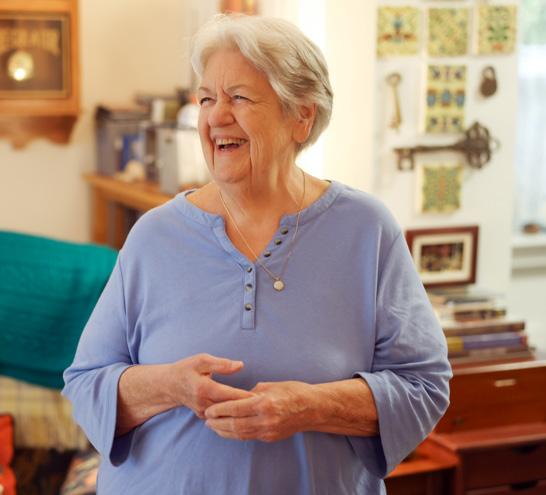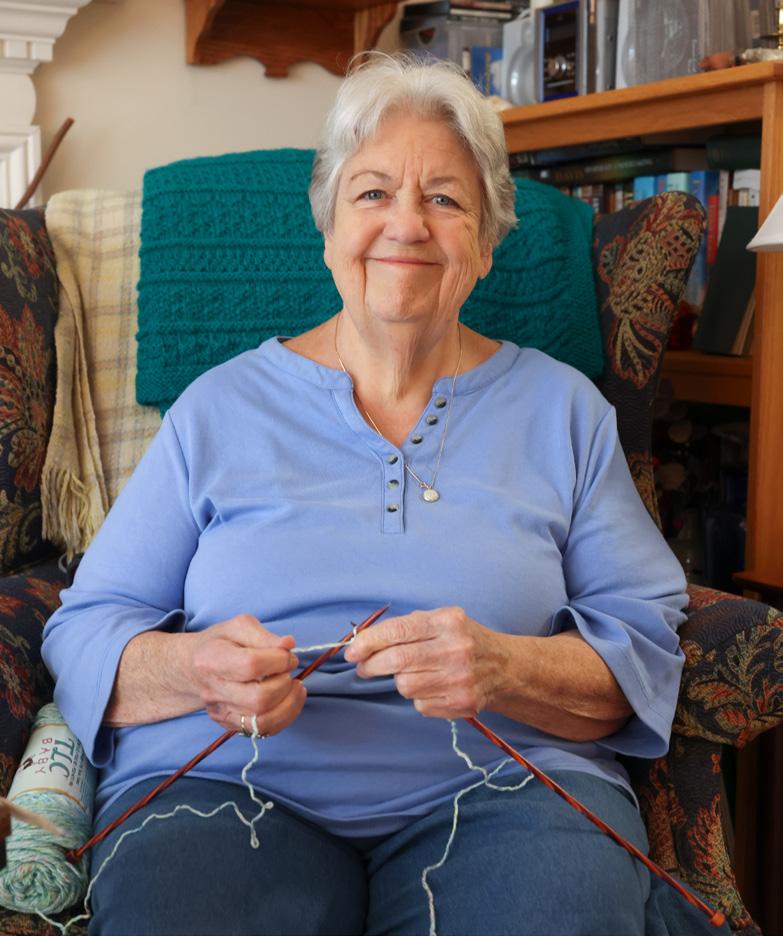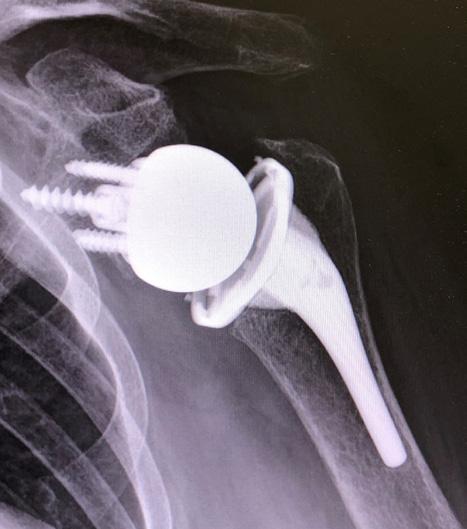
5 minute read
A Journey to Joint Renewal
One woman’s remarkable story of overcoming pain and regaining mobility
During her 40 years as a clinical nurse, Irene inflicted significant wear on her joints, lifting patients, hoisting cumbersome medical devices and working long hours on hard floors. An operating room (OR) nurse in Charlottesville for many years, she has also enjoyed home landscaping, building a tool shed and making numerous home improvements. All of those activities exacerbated the stress on her knees and shoulders. Irene initially tried physical therapy to relieve her pain, but eventually she realized she needed to seek a surgical solution.
“I did my research to find the surgeon with the most experience and satisfied patients to replace my knees and shoulders,” explains Irene, 79. “I take my health and health decisions very seriously.”
Surgical Options
Irene proceeded with knee replacement surgery and then decided to fix her shoulders, which would hopefully eliminate the rest of her pain. Once an avid crafter, her pain and weakness were keeping her from doing the things she loved. Sewing, watercolor painting and knitting, unfortunately, were no longer enjoyable.
“I was experiencing restricted motion in both arms,” she notes. “It became harder to raise my arms over my head and carry heavier objects. I could no longer do as much as I wanted at home.”
While recovering from her knee surgery, Irene was also placing more strain on her shoulders as she braced herself going up and down stairs, contributing to her worsening shoulder pain.
That’s when she found Stephen Gunther, MD, a shoulder specialist at Sentara Martha Jefferson Hospital with 25 years of experience. She trusted Dr. Gunther to educate her and provide the latest surgical options for treating her pain, stiffness and weakness.
“Irene was a pleasure to care for throughout our journey,” says Dr. Gunther. “Since she was an OR nurse for many years, she understood my extensive explanations about indications for surgery, implant design, surgical technique and postoperative rehabilitation. She read my shoulder arthroplasty teaching pamphlet, and we discussed all of her questions.”
As people age, they generally experience more wear-and-tear injuries on joints, muscles and tendons. Joint cartilage can wear out, resulting in arthritis, and tendons can tear, causing weakness. Cartilage can also disappear, causing bones to rub against other bones without a buffer, causing both pain and stiffness. Tightening scar tissue and bone spurs can also cause stiffness and pain. Physical therapy, nonsteroidal anti-inflammatory drugs and injections are often recommended before surgery — but sometimes it’s clear right away that surgery is needed.

Left Shoulder Replacement

Being right-hand dominant, Irene decided to fix her left shoulder first. During the initial consultation and workup, Dr. Gunther identified multiple problems in her left shoulder, including severe degenerative joint arthritis, tightening scar tissue with stiffness, bone spurs and multiple rotator cuff tears. After extensive preoperative discussions, he recommended a reverse ball and socket total shoulder replacement, a procedure that uses a medical device designed specifically for patients with both shoulder arthritis and rotator cuff tears. Dr. Gunther’s work in academic medicine and medical innovation has involved him in the development and use of this special implant for the past 20 years.
“During any joint replacement, our first task is to remove damaged bone and clean the joint out to remove any bone fragments,” he explains. “We replace the existing joint surface with a new ball and socket, which are made of prosthetic materials — typically a metal ball and plastic polyethylene socket. The result is a joint that glides smoothly and pain-free, just like skating on a freshly cleaned ice hockey rink.”
Irene recovered quite well after surgery and is very happy with her pain relief and improved function. “The procedure is not the problem,” Irene explains. “The postop care, however, is lengthy, and you must have some support mechanisms in place.”
After surgery, Irene immobilized her shoulder by wearing a sling. She saw a physical therapist for carefully guided motion exercises and gentle strengthening, while being careful to protect the surgical repair.
Right Shoulder Replacement

One year after fully recovering from her left shoulder replacement, Irene decided to fix her right shoulder. She diligently prepared her house to make it more user-friendly, which included making high-use kitchen items more accessible, figuring out a way to sign bills, buying groceries that would yield easier meals and completing other administrative tasks. She also knew she would have to rely on the kindness of friends for running errands and getting rides to physical therapy appointments.

Dr. Gunther informed Irene that her right shoulder was not quite as damaged as her left shoulder. This allowed for the possibility of a primary total shoulder replacement, which is less invasive and saves more intact bone.
He points out that the surgeon’s experience is not the only factor involved in a successful outcome. “The surgeon and the physical therapist work closely together to help the patient carefully recover motion and function. I enjoy building a team approach among the patient, surgeon and physical therapist.”
Dr. Gunther understands that undergoing a joint replacement takes a lot of preoperative planning, as well as postoperative adaptations to help the body heal. Despite these challenges, however, these surgeries offer a high probability of allowing patients to return to daily life and functional activities without pain.
Recovering well from her second surgery, Irene now looks forward to resuming an active lifestyle and is happy to give advice to others about preparing for this type of surgery.
“It’s challenging for a while, and you have to rely on people to help,” she says. “But when it comes to the point where there is no alternative, the outcome is well worth it.”

